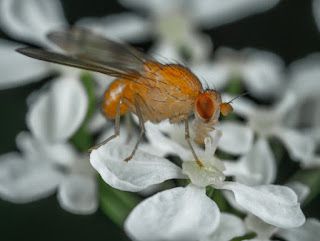Elegant Fruit Fly Sensory Design
In a recent post, we saw that something comparatively less complex, such as bacteria, have surprising features furnished by the Master Engineer. This time we will consider a recent discovery about fruit flies. It is not surprising that people confuse them with gnats because of their size and habits. I guess they are not technically bugs, but are still insects. Not only are fruit flies annoying, but they are also bad for our health. Ironically, they can be considered beneficial because they eat rotting stuff.
 | |
|
Because they have short life cycles, scientists like to experiment on them, such as futilely attempting to help evolution along with radiation. It's obvious that their brains are tiny, but sensing scents is vitally important. Their antennae do that and free up those tiny brains for other things. Who designed this elegant system? Darwin's disciples showed the pagan nature of evolution again, foolishly giving credit to Nature. Nature is not an entity, old son. The credit for this design belongs to the Creator and not any of the puny gods of evolutionism.
Graduate student Shiuan-Tze Wu led a study of some ingenious organization into the odor-sensing cells of fruit flies. He and his collaborators at the La Jolla campus of UC San Diego found that the odor-detector cells in the insects’ antennae talk to one another in a way that saves brainpower. It’s all so impressive that the senior author of the report called it “simple yet elegant,” according to the UC San Diego News Center.The team published in the Proceedings of the National Academy of Sciences. They ran a series of tests on the cells, each called an olfactory receptor neuron (ORN). The cells partner up into sets called sensilla—mostly in pairs, but sometimes in groups of up to four cells.
You can read the rest if you fly on over to "'Simple Yet Elegant' Design in Fruit Flies." Related: "Fruit Flies, Our Supposed Evolutionary Cousins."